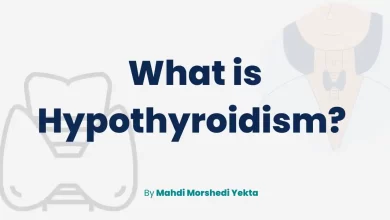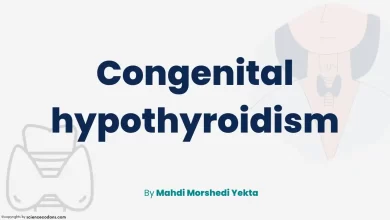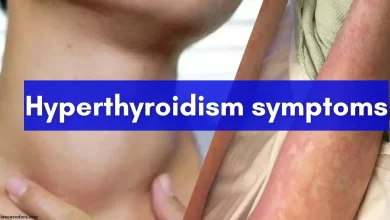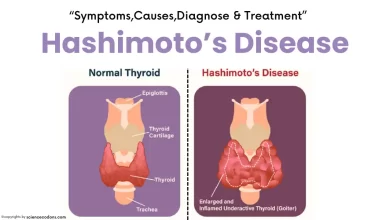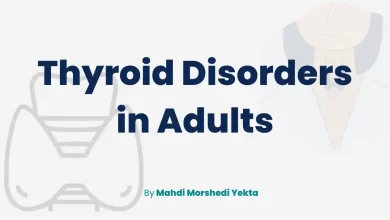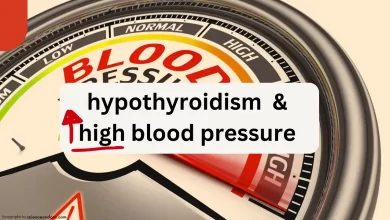A thyroid nodule is an abnormal growth or lump in the thyroid gland. These nodules can originate from thyroid tissue itself and may grow either inside the thyroid or on its surface.
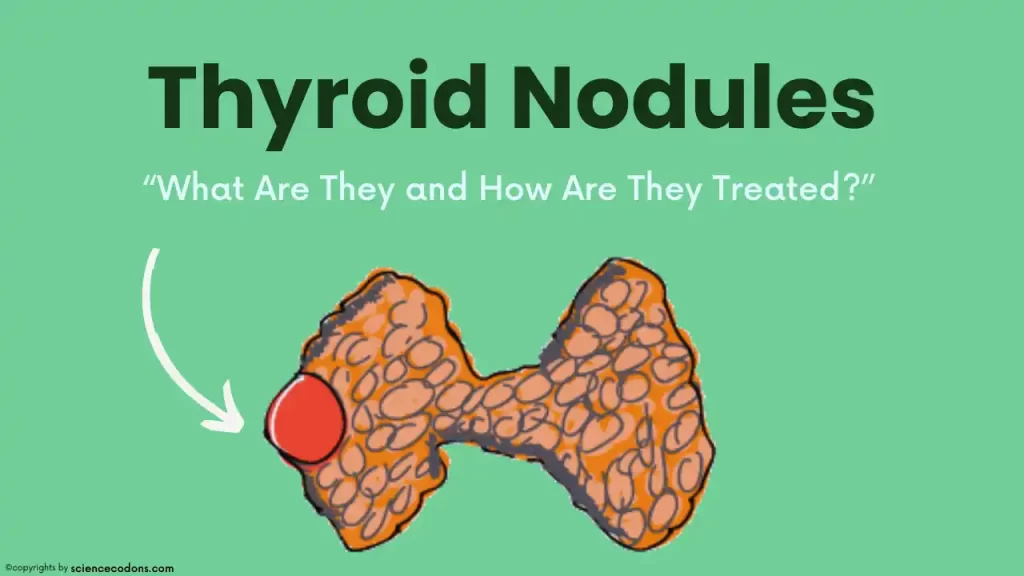
Interestingly, most thyroid nodules do not correlate with either overactivity (hyperthyroidism) or underactivity (hypothyroidism) of the thyroid gland. In other words, in most cases, the thyroid gland functions normally despite the presence of nodules.
Thyroid nodules are quite common, and many individuals are unaware of their existence. Often, these nodules are discovered incidentally during a routine medical examination by a physician or sometimes by the patients themselves or their family members.
Clinical Symptoms of Thyroid Nodules
Thyroid nodules are usually small and painless, causing no noticeable pressure in the neck. Many patients remain unaware of the prominence caused by nodules in their thyroid gland, which is often discovered by physicians during routine check-ups or examinations for other reasons.
Occasionally, bleeding within the nodule can lead to swelling, and patients may experience pain in the affected area. While very large nodules might exert pressure in the throat region, most complaints related to the throat do not necessarily correlate with the size of the nodule, especially in the case of small nodules.
| Symptoms | Description |
|---|---|
| Enlarged Thyroid Gland | The thyroid gland may appear larger than normal. |
| Visible Lump | A lump may be visible at the base of the neck. |
| Swelling at Base of Neck | There may be swelling at the base of the neck. |
| Pain at the Base of Neck | Pain may be felt at the base of the neck. |
| Difficulty in Swallowing and Breathing | Difficulty in swallowing and breathing may be experienced. |
| Hoarse Voice | The voice may become hoarse. |
| Persistent Fatigue | Persistent fatigue may be experienced if nodules are producing abnormal level of hormones. |
| Unexplained Weight Gain or Loss | Unexplained weight gain or weight loss may occur if nodules are producing abnormal level of hormones. |
| Sensitivity to Cold | Sensitivity to cold may be experienced if nodules are producing abnormal level of hormones. |
| Dry Skin and Hair | Dry skin and hair may be experienced if nodules are producing abnormal level of hormones. |
| Brittle Nails | Brittle nails may be experienced if nodules are producing abnormal level of hormones. |
| Increased Perspiration | Increased perspiration may be experienced if nodules are producing abnormal level of hormones. |
What causes thyroid nodules?
The exact cause of thyroid nodules is not known, but some factors may increase the risk of developing them, such as:
- Iodine deficiency or excess, which can affect the thyroid function and hormone production
- Thyroid inflammation or infection, which can damage the thyroid cells and cause them to grow abnormally
- Thyroid autoimmune diseases, such as Hashimoto’s disease or Graves’ disease, are conditions where the immune system attacks the thyroid gland and causes inflammation and dysfunction.
- Radiation exposure, especially during childhood, can damage the DNA of the thyroid cells and increase the risk of cancer.
- Family history or genetic mutations which can predispose some people to develop thyroid nodules or cancer
How are thyroid nodules diagnosed?
Clinical examination
Initially, the doctor takes a detailed medical history and conducts a clinical examination of the thyroid gland. Key points in the history include assessing the nodule’s growth rate, any history of radiation exposure to the head and neck, and a family history of thyroid cancer.
The most significant risk factor is a prior history of radiation exposure during childhood or adolescence to areas around the head and neck. In the past, radiotherapy was used to treat conditions like baldness, enlarged tonsils, and facial acne. Individuals with such a history are at a higher risk of developing thyroid nodules. However, it’s essential to note that diagnostic radiographs (such as dental X-rays) and using radioactive materials for diagnostic scans do not pose the same risk.
Thyroid Ultrasound
Ultrasound is effective in distinguishing between thyroid cysts and solid or firm nodules. It also helps determine whether the nodules are solitary or multiple. Additionally, this method accurately measures the size of the nodule. Although thyroid nodule ultrasound alone cannot definitively diagnose whether nodules are benign or malignant if a thyroid nodule exhibits suspicious features, a needle biopsy becomes necessary.
Fine-Needle Aspiration (FNA) Biopsy of the Nodule
FNA is a minimally invasive procedure performed without the need for anesthesia or local numbing. It involves inserting a thin needle connected to a syringe into the nodule. A sample of cells from within the nodule is aspirated and spread onto a slide.
A pathologist examines the stained samples. If the nodule contains fluid, the syringe can often drain some or all of it. In more than 90% to 95% of cases, FNA provides information about whether the thyroid nodule is benign or malignant. If the aspirated sample is insufficient, repeat FNA may be necessary. It’s essential to note that FNA does not cause significant discomfort or risk. Performing FNA during thyroid ultrasound (sonography) is crucial in many cases.
Thyroid Scintigraphy (Thyroid Scan)
Thyroid scintigraphy uses small amounts of radioactive materials (usually radioactive iodine or technetium). The thyroid gland absorbs these materials from the blood. A specialized camera creates an image of the thyroid. The procedure is low-risk and exposes the patient to minimal radiation, causing no harm to other tissues. However, pregnant or breastfeeding women should avoid thyroid scans.
Nowadays, thyroid scintigraphy is less commonly used for diagnosing thyroid nodules. Its primary application is when thyroid function tests indicate brief or overt thyroid hyperactivity. If a “hot nodule” (a nodule with increased uptake) is detected on the thyroid scan, there is no need for fine-needle aspiration (FNA).
Other Tests
Initial evaluation of thyroid nodules should include blood tests to assess thyroid function, which may be repeated during treatment.
The Importance of Diagnosis and Follow-up for Thyroid Nodules:
Approximately 95% of thyroid nodules are benign (noncancerous) and generally do not require surgical intervention. However, about 5% of nodules can be malignant (cancerous), emphasizing the need for timely diagnosis and appropriate management when necessary.
How are thyroid nodules treated?
Benign thyroid nodules are typically examined regularly, usually every six months. Some patients may be prescribed a medication called levothyroxine. However, most thyroid nodules do not decrease in size with levothyroxine treatment, and only a small number may respond and become smaller. Levothyroxine can prevent some nodules from growing larger. A repeat needle biopsy may be needed if a nodule increases in size during levothyroxine treatment.
Thyroid surgery is recommended in the following situations:
- If the biopsy suggests, the nodule is malignant or potentially malignant.
- If the nodule continues to grow, there’s a possibility it could be malignant.
- If the nodule becomes large enough to cause pressure symptoms in the neck.
- If the appearance of the nodule is aesthetically displeasing to the patient, it is removed for cosmetic reasons.
What is the prognosis for malignant thyroid nodules?
Fortunately, most malignant thyroid nodules grow slowly. If treated in the early stages, the prognosis is excellent.
After a diagnosis of malignancy, surgery is required, during which almost all of the thyroid gland is removed. This operation is not associated with major side effects. Patients are typically discharged from the hospital after 2 to 4 days. Most patients do not experience difficulties with speaking or swallowing food after surgery. Four to six weeks after surgery, high doses of radioactive iodine may be prescribed to eliminate any remaining thyroid tissue. For this treatment, the patient is hospitalized for at least three days in the nuclear medicine department of the hospital. For lifelong follow-up, the patient should continue treatment with levothyroxine tablets and be periodically monitored for the continuity of the response to treatment or the possibility of disease recurrence based on a specific protocol.
It’s important to note that more than three-quarters of thyroid nodules do not require surgery, and regular check-ups are the best way to monitor them.
Conclusion
Thyroid nodules are lumps or growths that form on the thyroid gland, a small organ that produces hormones that regulate the body’s metabolism. They are very common and usually do not cause any symptoms or problems. However, in some cases, they may be cancerous or affect thyroid function. Diagnosing thyroid nodules involves a combination of medical history, physical examination, blood tests, and imaging tests. The treatment of thyroid nodules depends on the type, size, number, and location of the nodules, as well as the thyroid function and the presence of symptoms or complications.
The main treatment options are observation, surgery, radioactive iodine therapy, and other treatments. The outlook of thyroid nodules depends on the type, size, number, and location of the nodules, as well as the thyroid function and the presence of symptoms or complications. Most thyroid nodules are benign, do not cause any problems, and can be managed with observation or medication. Some thyroid nodules are malignant and require surgery and other treatments to cure.
Reference:
Mittal, M. (2019). Thyroid Nodule: Approach and Management.
